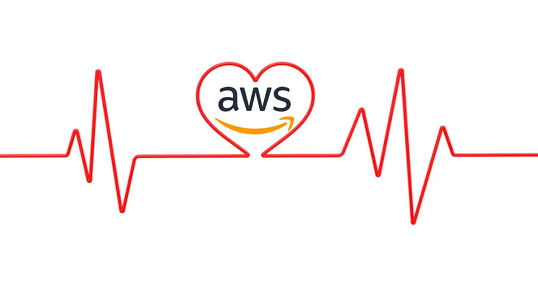Emergency Medical Services Analytics is widely used by healthcare networks that unite tens of hospitals and emergency rooms (ERs), employ thousands of physicians, and take care of hundreds of thousands of inpatient visits and millions of outpatient visits. They report millions of dollars saved as a result of the left-without-being-seen (LWBS) rate reduction. What are the steps that organizations have to take to achieve such results?
If healthcare networks used Emergency Medical Services Analytics, they improve the emergency departments (EDs) throughput times, meet industry standards, achieve the goal of enhanced patient care, and save costs. Emergency services analytics allows for engaging all stakeholders in the process of improving patient experience and the care quality.
However, without appropriate analytics, the workload of the EDs remains high, patient experience is low, huge sums of money are lost, and healthcare providers fail to always provide the right treatment in the right place.
Challenges on the Way to ED Efficiency
Healthcare networks located in densely populated areas have to face a high volume of ED visits. At the same time, their staff resources are limited. It leads to a number of problems:
Operational Efficiency
- Overcrowded EDs and long wait times lead to potential safety issues and patients’ dissatisfaction with received services
- High throughput times in EDs prevent the achievement of internal goals or industry standards for the LWBS rates
- Inefficiencies of internal processes that increase time from the arrival to the ED until transferring to a qualified provider
- Outside ED factors, such as diagnosis and testing times, room availability, transportation of patients, and the number of spare beds, slow down the throughput inside EDs
Data Limitations
- Limited access to data complicates targeted improvement efforts
- Insufficient data details about the patient flow inside the ED, including arrival times, patient volume, and throughput metrics, lead to ineffective improvement efforts
- Lack of collaborative data hinders cooperation between departments, making it difficult to develop hospital-wide improvement strategies.
Features of the Emergency Medical Services Analytics
Healthcare organizations implement population health analytics to make ED performance more efficient. Analytics software allows for the following:
- Analysis and comparison of the patient volume and arrival patterns by days, weeks, months, or years
- Review of KPIs that influence ED throughput (the timing of the room cleaning procedures; results turnaround for lab tests, imaging scans and descriptions; patient transportation times; inpatient occupancy rates and transfers to other departments; length of stay (LOS) rates; ED patient volume, and throughput metrics)
- Identification of the peak patient arrival times
- Reference to standard protocols for optimized ordering diagnostic lab and image tests, even without an available ED bed
- Staff notification of the current occupancy and managing their activities according to the demand through the dashboard with colored statuses of hospital loading.
Organizational Measures to Implement the Analytics
Implementing data analytics brings healthcare organizations impressive results. However, additional activities are crucial for smooth and sustained performance.
Leadership Engagement
- It is worth engaging hospital leaders to address challenges of ED throughput for ultimately providing the proper care in the right place and enhancing the overall quality of care and patient experience.
- It is recommended for hospital leaders to assign an interdisciplinary improvement team, including ED doctors, nurses, laboratory and radiology representatives, as well as experts on data analytics. Together, they will outline the hospital-wide roadmap for improving ED throughput
- It is important for the hospital executives to monitor the performance metrics that impact ED throughput and discuss the team engagement with the stakeholders in daily meetings.
Staff Collaboration and Feedback Integration
- The hospital executives should gather the staff feedback and use it to identify opportunities for improving the ED throughput and care practices
Workflow Optimization
- The nursing staff and environmental services teams should be notified of the patients planning to be discharged
- Nurses should assist them in meeting the deadline for the discharge while the environmental service should arrive on time to clean the room for the next patient
Improvements EDs Get after Implementing the Analytics
Health population analytics provide healthcare networks with data that is used to manage processes efficiently and decrease LWBS and LOS rates. As reported, the application of data analytics results in the following:
Financial Improvements
- More than $1 million saved due to the relative reduction of the LWBS rate
Time Efficiency Improvements
- Significant reduction of the waiting time spent by patients in the EDs before the first interaction with the provider
- Reduction in the ED LOS
- Shortened time between the patient admission order and their arrival to the inpatient bed and between the discharge order and departure from the ED
Operational Workflow Improvements
- Shortening the wait time for patient evaluation by ensuring ED beds are occupied immediately after patients’ arrivals
- Establishing time frames for discharging patients and engaging nursing staff to assist patients with discharging procedures to prevent back-ups within EDs
- Timely turnover of the rooms, as environmental services are notified and clean rooms immediately after patients’ discharge
- Transparent hospital staff management with the help of colored statuses indicating the workload and occupancy.
Data-Driven Argumentation for Facility and Resource Management
- Creating additional waiting rooms for patients for the cases when the ED beds are occupied, where patients can pass diagnostic tests according to standard protocols
- Opening additional treatment space to be used at peak times for various types of care
- Allocating sufficient nursing staff to EDs to align with the patterns of patient arrivals
- Involving additional specialists in the triage area to assist at EDs at peak times to accelerate the assessment of patients
How Belitsoft Can Help
Belitsoft is a full-cycle software development and analytics consulting company that specializes in healthcare software development. We help top healthcare data analytics companies build robust data analytics platforms.
For integrated data platforms developed to collect, store, process, and analyze large volumes of data from various sources (Electronic Medical Records, clinic management systems, laboratory systems, financial systems, etc.), we:
- Automate data processing workflows (cleansing, standardization, and normalization).
- Configure scalable data warehouses.
- Set up and implement analytical tools for creating dashboards, reports, and data visualizations.
- Ensure a high level of data security and compliance with healthcare regulations such as HIPAA.
- Integrate machine learning and AI into analytics.
We also help build specialized analytical applications like Emergency Medical Services Analytics for:
- Utilizing real-time data to support a comprehensive analysis and research
- Tracking performance indicators related to lab tests, LOS, use of care units, etc.
- Aggregating detailed reports for clinical practice management
- Filtering the data according to time of the day, day, week, month, year
- Categorizing the data according to payer, provider, patient details
- Demonstrating facility performance metrics, such as LWBS rates, arrival trends, etc.
- Visualizing the patient volume and throughput summaries in graphs with such metrics as arrival times, LWBS rates, periods between admission and arrival to an inpatient bed, and between discharging and leaving the ED, etc.
If you're looking for expertise in data analytics, data integration, data infrastructure, data platforms, HL7 interfaces, workflow engineering, and development within cloud (AWS, Azure, Google Cloud), hybrid, or on-premises environments, we are ready to serve your needs. Contact us today to discuss your project requirements.
Rate this article
Recommended posts
Portfolio

Our Clients' Feedback


















.jpg)
.jpg)
.jpg)
.jpg)
.jpg)
.jpg)
.jpg)
.jpg)
.jpg)
.jpg)
.jpg)
.jpg)
.jpg)
.jpg)
.jpg)
.jpg)
.jpg)
.jpg)
.jpg)
.jpg)
.jpg)
.jpg)
.jpg)
.jpg)
.jpg)
.jpg)
.jpg)
.jpg)
.jpg)
.jpg)
.jpg)
.jpg)
.jpg)
.jpg)
.png)
.jpg)
.jpg)
.jpg)
.jpg)
.jpg)
.jpg)
.jpg)
.jpg)
.jpg)
.jpg)
.jpg)
.jpg)
.jpg)
.jpg)
.png)
.jpg)
















We have been working for over 10 years and they have become our long-term technology partner. Any software development, programming, or design needs we have had, Belitsoft company has always been able to handle this for us.
Founder from ZensAI (Microsoft)/ formerly Elearningforce